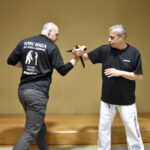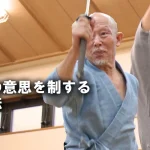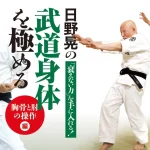text and photo by Grigoris A.Miliaresis
it’s been already one year since the last time I walked the path along the Sumida towards the Taito Riverside Sports Center in Asakusa for a classical martial arts’ demonstration and returned to write about it in these here pages. Twelve months and several demonstrations later, on April 20th I was certainly going up the river much more relaxed but the excitement hadn’t really waned; after many years of starving for live demonstrations of koryu budo, it will take more than a few to make me adopt a more casual attitude about them!

The event was again the annual Nihon Kobudo Shinkokai’s Enbu Taikai and the venue and the general air in the area were now familiar: The yabusame people tending to their horses for the competition that was going to take place in a few hours, the classical music pouring from the speakers for the Kusajishi ritualistic archery contest which was already underway (I still haven’t come to grips with seeing people in Heian kimono, eboshi hats and asagutsu shoes catching a quick smoke and a cup of coffee before these events)… What was different was the heavy rain and the absence of the Heisei Nakamura-za next to the Sports Center, a sad reminder that in the previous year, its illustrious founder Nakamura Kanzaburo XVIII had also perished.

The Taikai’s introductory event was a talk by Mr. Saito Satoshi, head of the Nihon Kobudo Shinkokai and of the Negishi Ryu of shurikenjutsu. His talk was split into three subjects, the first related to the name of the samurai that defended until the last moment Ii Naosuke that fateful day of March 1860 outside the Sakurada Gate of the castle of Edo, the second about a precious (and unusually big at 2.8 shaku) sword owned by Ii himself and the third about Yasuda Zenjiro of the Ootuski Ryu, the man who had the opportunity to take the picture of Ii’s sword that was included in the Enbu Taikai’s program notes.
The Taikai itself was interesting; of course as I wrote before, for me these demonstrations are interesting anyway but regardless of that there were some things that I hadn’t seen before and I was very happy I now had the opportunity to. First it was the Wado Ryu Jujutsu Kenpo-Karate Jutsu demonstration by Otsuka Hironori II; although I had seen Wado Ryu karate before, this was the first time to see performed the jujutsu applications against a small and a long blade and that was definitely something different! And while at the subject of karate, very interesting was also the demonstration by Hayasaka Yoshifumi and members of the Kingai Ryu of Okinawan kobudo; last year Hayasaka sensei presented us with some of the most extraordinary weapons of the Okinawan tradition and this year we had the chance to see some of them in actual use. Perhaps the most unusual was kuwa, a quite heavy hoe swung expertly by one of Hayasaka sensei’s female students.
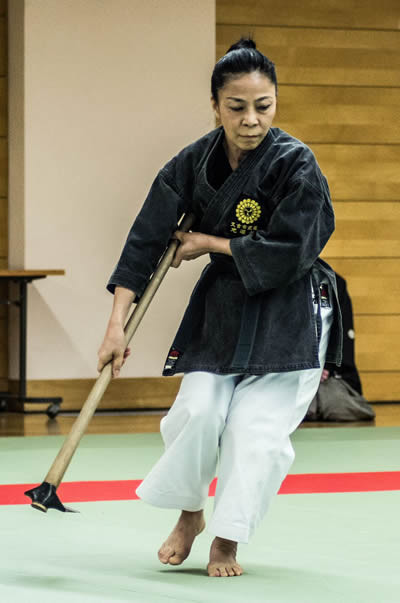
Other highlights? It’s always a pleasure to watch the different approaches to Yagyu Shinkage Ryu by the Yagyu and the Kajitsuka dojo, Araki Ryu by the Kikuchi and the Suzuki dojo and Tenshin Shoden Katori Shinto Ryu by the Iizasa/Ootake and the Sugino dojo and I was pleasantly surprised to see the Hozoin Ryu return with a pair of exponents who train in Tokyo; seeing the historic school from Nara expand is very promising for its future (as a side note, I saw that the two performers had split weapons joining with screws –I hadn’t seen that before but I guess having to carry them around in Tokyo’s metro system must be the culprit!). The twin swords of the Sekiguchi Ryu and the Shingyoto Ryu, the odachi techniques of the Shinmuso Hayashizaki Ryu and the tameshigiri technique of the Morishige Ryu were also worth mentioning; the Morishige Ryu also used an unusual prop this year: a whip mimicking the sounds of the shots which couldn’t obviously be fired indoors.
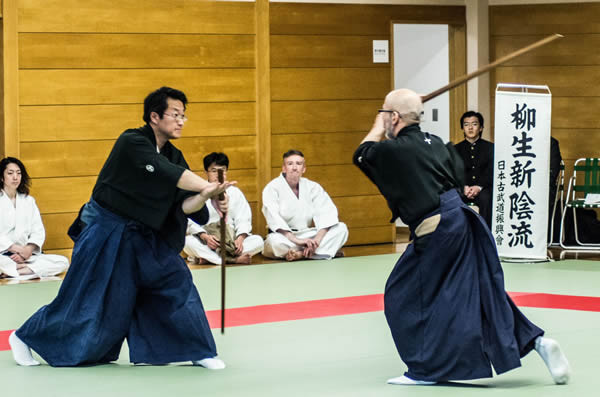
As usual the event left me with a deep feeling of satisfaction. Besides the demonstration itself, it is always wonderful to be in a place where you get the opportunity to mingle with people sharing your interest for these arcane arts. Being part of this mélange of people of all ages in all styles and colors of keikogi, montsuki and hakama going up and down, warming up, greeting each other, carrying weapons, chatting, gossiping and commenting on what was going on is a reminder that this is a lively community with its sole focus keeping these arts alive and vital taking into account that times change and that the only way to do it is by conforming to these changes by preserving the arts’ essence.
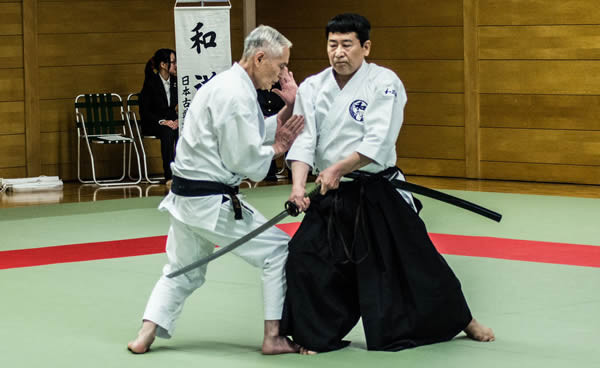
 About the author
About the author
Grigoris Miliaresis has been practicing Japanese martial arts since 1986. He has dan grades in judo, aikido and iaido and has translated in Greek over 30 martial arts’ books including Jigoro Kano’s “Kodokan Judo”, Yagyu Munenori’s “The Life-Giving Sword”, Miyamoto Musashi’s “Book of Five Rings”, Takuan Shoho’s “The Unfettered Mind” and Donn Draeger’s “Martial Arts and Ways of Japan” trilogy. Since 2007 his practice has been exclusively in classic schools: Tenshin Buko-ryu Heiho under Ellis Amdur in Greece and Kent Sorensen in Japan and, since 2016, Ono-ha Itto-ryu under 17th headmaster Sasamori Takemi and 18th headmaster Yabuki Yuji.
http://about.me/grigorismiliaresis

